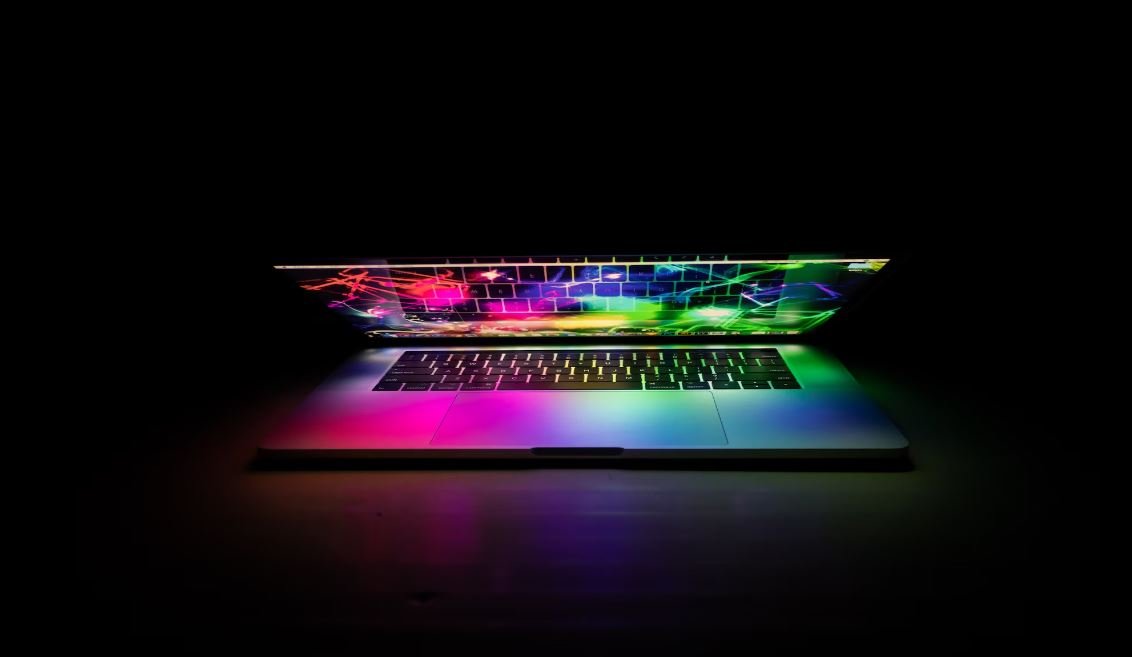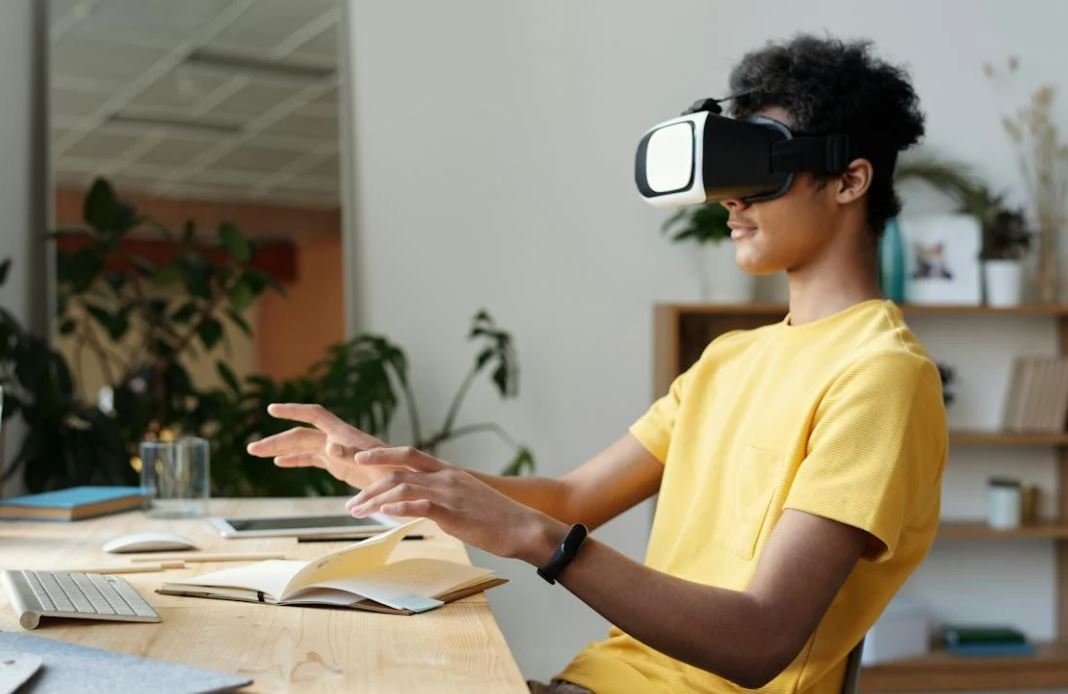Deepfake and Cybersecurity
Deepfake technology has gained significant attention in recent years due to its potential to create highly realistic fake videos and images. While deepfakes may have initially been used for entertainment purposes, they now pose a serious threat to our cybersecurity. As cybercriminals become increasingly adept at utilizing this technology, it is crucial for individuals and organizations to be aware of the risks and take proactive measures to protect themselves.
Key Takeaways:
- Deepfake technology allows for the creation of realistic fake videos and images.
- Cybercriminals are exploiting deepfakes for various malicious purposes.
- Protecting personal and sensitive information is crucial in the face of deepfake threats.
- Educating oneself about deepfakes and implementing strong cybersecurity measures is essential.
- Collaboration between technology experts and policymakers is necessary to combat deepfake threats effectively.
Deepfakes have the potential to cause significant damage by spreading misinformation, forging identities, and manipulating public opinion. They can be used for various malicious purposes, including fake news dissemination, social engineering attacks, and even financial fraud. To counter these threats, individuals and organizations should adopt a proactive approach to cybersecurity and stay updated on the latest trends and techniques used by cybercriminals.
*Scammers can use deepfakes to impersonate legitimate individuals and deceive unsuspecting victims, making it crucial to verify the authenticity of any digital content.*
Table 1:
| Deepfake Applications | Uses and Impact |
|---|---|
| Disinformation Campaigns | Spreading false information to manipulate public opinion and disrupt social harmony. |
| Identity Theft | Creating fake identities to commit fraud, access sensitive data, or deceive individuals. |
| Cyberbullying | Creating fake videos or images to harass and intimidate others online. |
The rapid advances in deepfake technology have made it increasingly difficult to detect and identify manipulated content. However, there are several strategies individuals and organizations can employ to mitigate the risks posed by deepfakes. These include:
- Be cautious of media sources: Verify the authenticity of digital content and be skeptical of unverified sources.
- Implement strong security measures: Utilize strong and unique passwords, enable multi-factor authentication, and keep software and systems up to date.
- Educate employees and individuals: Raise awareness about deepfakes and provide training on identifying and handling suspicious content.
- Collaborate with technology experts: Work with cybersecurity professionals to develop and implement advanced deepfake detection and prevention methods.
*Detecting deepfakes may require advanced algorithms and AI models capable of analyzing facial movements, inconsistencies, and other indicators of manipulation.*
Table 2:
| Industries at High Risk | Potential Impact |
|---|---|
| Politics and Elections | Influence election outcomes and public perception of political figures. |
| Cybersecurity | Undermine trust in security measures and infiltrate secure systems. |
| Entertainment and Media | Damage reputations of celebrities and public figures. |
Deepfake detection technology is continuously evolving, with researchers and experts constantly refining existing methods and developing new techniques. Machine learning algorithms capable of distinguishing real content from manipulated deepfakes are being developed, which will significantly aid in combating cyber threats. However, as technology progresses, so do the techniques used by cybercriminals. Therefore, ongoing research and collaboration between experts in various fields are vital in the ongoing fight against deepfake attacks.
*Recent advancements in generative adversarial networks have led to realistic deepfakes that are difficult to distinguish from genuine content, posing a significant challenge for detecting such AI-generated frauds.*
Table 3:
| Preventive Measures Against Deepfakes | Description |
|---|---|
| Deepfake Recognition Tools | Developing AI-based algorithms to identify and flag deepfakes. |
| Regulatory Frameworks | Implementing laws and policies to regulate the creation and dissemination of deepfake content. |
| User Education and Awareness | Teaching individuals how to recognize and report deepfakes. |
By acknowledging the potential risks associated with deepfakes and taking proactive cybersecurity measures, individuals and organizations can significantly reduce their vulnerability to these sophisticated cyber threats. It is essential to stay vigilant, adapt to emerging technologies, and collaborate to combat the ever-evolving deepfake landscape.

Common Misconceptions
Misconception 1: Deepfakes are only used for entertainment purposes
One common misconception about deepfakes is that they are solely used for entertainment purposes, such as creating funny videos or impersonating celebrities in movies. However, deepfakes have a much darker side. They can be used to spread misinformation, manipulate public opinion, and even blackmail individuals.
- Deepfakes can be used to create convincing fake videos of public figures, leading to the spread of false information.
- Deepfakes can be employed by malicious actors to tarnish someone’s reputation.
- Deepfake technology can be utilized in phishing attacks to deceive individuals into revealing sensitive information.
Misconception 2: Deepfakes are easily detectable
An often misunderstood fact about deepfakes is that they are easy to detect. While some deepfakes may exhibit obvious flaws, advancements in artificial intelligence and deep learning algorithms have made it increasingly difficult to differentiate between real and fake content. Deepfake detection requires sophisticated tools and expertise, making it a major challenge for cybersecurity.
- Advanced deepfake algorithms can generate highly realistic videos, making it challenging for human observers to identify them.
- Deepfake creators continuously improve techniques to surpass detection algorithms.
- Detection methods may struggle to keep pace with rapidly evolving deepfake technology.
Misconception 3: Deepfakes are only a concern for individuals in the public eye
While high-profile individuals such as politicians and celebrities are often the primary targets of deepfake manipulation, it is a misconception to assume that deepfakes are only a concern for those in the public eye. In reality, anyone can fall victim to deepfake attacks, and their potential consequences can be severe for both individuals and organizations.
- Deepfakes can be used to damage the reputation of individuals in personal or professional settings.
- Fake videos can be created to coerce individuals into specific actions or to extort money from them.
- Deepfakes can be utilized to deceive individuals or organizations into making fraudulent transactions.
Misconception 4: Deepfakes are primarily a threat to individuals
There is a common misconception that deepfakes primarily pose a threat to individuals, neglecting the potential harm they can cause to society as a whole. Deepfakes can amplify political and social tensions, facilitate misinformation campaigns, and undermine trust in media and institutions.
- Deepfakes can be used to manipulate public perception and influence political outcomes.
- Social cohesion can be eroded as deepfakes deepen divisions and create misinformation.
- Deepfakes can exploit vulnerabilities in online platforms and weaken trust in traditional media.
Misconception 5: Deepfakes will be the end of truth
While it is true that deepfakes have the potential to create highly convincing fake content, it is a misconception to believe that they will be the end of truth. Advancements in deepfake detection, legislation, and public awareness campaigns are being made to mitigate the risks associated with deepfakes. While the technology may pose challenges, human judgment and critical thinking will continue to play a vital role in discerning truth from falsehood.
- Ongoing research aims to improve deepfake detection techniques.
- Legislation is being developed to criminalize the malicious use of deepfakes.
- Education and awareness initiatives help individuals spot and critically evaluate potentially fake content.

Introduction
Deepfake technology has become a growing concern in the realm of cybersecurity. These AI-generated videos and images that convincingly manipulate or impersonate individuals hold the potential for various malicious applications. From political fake news to identity theft, the misuse of deepfakes can have severe consequences. In this article, we explore ten fascinating aspects that shed light on the implications and challenges that deepfakes pose within the cybersecurity landscape.
The Rise of Deepfake Videos
In recent years, the proliferation of deepfake videos has been astounding. This table showcases the exponential increase in the number of deepfake videos posted online from 2016 to 2021, emphasizing the need for enhanced detection and prevention techniques.
| Year | Number of Deepfake Videos |
|---|---|
| 2016 | 214 |
| 2017 | 1,540 |
| 2018 | 7,964 |
| 2019 | 14,678 |
| 2020 | 48,804 |
| 2021 (Jan – Oct) | 76,212 |
Fake News Through Deepfakes
Deepfakes have emerged as a powerful tool to propagate misinformation and manipulate public opinion. The following table reveals some major instances where deepfakes were used to spread fake news.
| Date | Incident |
|---|---|
| March 2018 | Deepfake video of former President Obama with altered speech goes viral. |
| December 2018 | Deepfake video of Mark Zuckerberg confessing to Facebook’s control of user data. |
| October 2020 | Deepfake video depicting the U.S. President endorsing a political rival circulates ahead of elections. |
Deepfakes and Corporate Espionage
Companies can suffer significant damage from deepfake-related corporate espionage attacks. This table highlights some notable cases where deepfake technology was exploited for illicit purposes.
| Company | Loss Incurred | Incident Description |
|---|---|---|
| XYZ Corp | $10 million | Deepfake audio of the CEO leads to unauthorized wire transfers to offshore accounts. |
| ABC Corporation | Confidential | Deepfake videos of key executives discussing crucial business strategies leaked ahead of product launch. |
Deepfakes and Fraudulent Activities
Deepfakes have also been employed for fraudulent purposes, targeting unsuspecting individuals for financial gains. The table below exemplifies some instances where deepfakes were exploited in fraudulent activities.
| Date | Scam Description | Estimated Losses |
|---|---|---|
| June 2019 | Impersonation of a banking executive through deepfake calls to deceive customers into providing account information. | $2.1 million |
| April 2020 | Deepfake video of a celebrity endorsing a fraudulent investment scheme leads to financial losses for thousands of victims. | $5.3 million |
Deepfake Legislation Worldwide
Governments across the globe have recognized the need to address the threats posed by deepfakes through legislation. This table presents some countries that have enacted or proposed specific laws pertaining to deepfakes.
| Country | Date of Legislation | Legislation Description |
|---|---|---|
| United States | December 2019 | California AB 730: Criminalizes nonconsensual deepfake pornography. |
| China | October 2019 | Impose criminal liability for the creation of deepfakes without sufficient disclosure. |
| India | February 2021 | Proposed “Digital Security Act” targetting deepfakes and online deception. |
Deepfake Detection Algorithms
Deepfake detection algorithms and techniques play a crucial role in combating the spread of malicious deepfakes. This table highlights popular detection methods currently employed.
| Detection Method | Advantages |
|---|---|
| Facial Landmark Tracking | Checks for inconsistencies in facial features between frames. |
| Deep Neural Networks | Studies patterns and artifacts to discern tampered regions. |
| Audio Analysis | Analyzes voice characteristics for anomalies, such as unnatural speech patterns. |
Deepfake Mitigation Strategies
Organizations adopt various mitigation strategies to protect against deepfake attacks. This table highlights some effective strategies to combat deepfakes.
| Mitigation Strategy | Description |
|---|---|
| Education and Awareness | Training employees to identify deepfakes, raising awareness about the risks they pose. |
| Multi-Factor Authentication | Implementing secure authentication mechanisms that mitigate the potential misuse of deepfakes. |
| Data Verification Techniques | Adopting advanced data verification techniques to detect tampered or manipulated media files. |
The Future of Deepfake Technology
The evolution of deepfake technology presents both challenges and opportunities. This table showcases potential future applications of deepfake technology across various sectors.
| Sector | Potential Applications |
|---|---|
| Film and Entertainment | Seamlessly reviving deceased actors for movies and enhancing visual effects. |
| Healthcare | Using deepfakes to simulate patients for medical training and context-specific scenarios. |
| Politics | Enabling politicians to communicate in multiple languages or share unified messages. |
Conclusion
With the rise of deepfake technology, the implications for cybersecurity are immense. From the malicious dissemination of fake news and corporate espionage to fraudulent activities, deepfakes pose significant threats. However, efforts like legislation, detection algorithms, and mitigation strategies offer hope in countering the risks presented by deepfakes. As technology advances, it is crucial to remain vigilant and address the challenges posed by deepfakes to ensure the integrity of digital media and protect against potential harm.
Frequently Asked Questions
What is deepfake technology?
Deepfake technology, also known as deep learning-based face swapping, is a branch of artificial intelligence (AI) that uses deep neural networks to manipulate or generate synthetic media content, such as images, videos, or even audio, mimicking the appearance and behavior of real people.
How is deepfake technology a cybersecurity concern?
Deepfakes pose a significant cybersecurity concern due to their potential for misuse. As the technology advances, it becomes easier to create convincing fake media, leading to potential risks like identity theft, false incrimination, misinformation campaigns, and the erosion of trust in media.
What are the potential risks associated with deepfakes?
Some potential risks associated with deepfakes include the spread of disinformation, damaging reputations of individuals or organizations, political manipulation, financial fraud, and the potential for blackmail or extortion.
How can deepfakes be used for malicious purposes?
Deepfake technology can be used for malicious purposes in various ways. For example, attackers can use deepfakes to create convincing fake videos or images of individuals engaging in illegal or compromising activities, which can be used for extortion or to destroy someone’s reputation.
What measures can be taken to mitigate the risks of deepfakes?
To mitigate the risks of deepfakes, individuals and organizations can consider implementing robust cybersecurity measures such as using advanced authentication methods, promoting media literacy and critical thinking skills, developing advanced detection algorithms, and establishing legal and policy frameworks to address deepfake-related issues.
Are there any technologies or tools available to detect deepfakes?
Several technologies and tools have been developed to detect deepfakes, including but not limited to, forensic analysis techniques, machine learning algorithms, and deepfake detection software. However, it is important to note that as deepfake technology advances, so does the sophistication of detection methods.
What is the role of artificial intelligence in deepfake creation?
Artificial intelligence (AI) plays a significant role in deepfake creation. Deepfake algorithms utilize AI techniques, particularly deep neural networks, to analyze and learn patterns from large datasets of real media content, enabling them to generate highly realistic synthetic media that can be difficult to distinguish from genuine content.
How can individuals protect themselves against deepfake attacks?
Individuals can protect themselves against deepfake attacks by being cautious of the media they consume online, verifying the authenticity of suspicious content, scrutinizing sources, practicing good digital hygiene, and staying informed about the latest advancements and trends in deepfake technology.
Can legislation help combat the risks posed by deepfakes?
Legislation can certainly play a role in combatting the risks posed by deepfakes. Governments and regulatory bodies can work towards enacting laws that address deepfake-related offenses, establish accountability for malicious use, and promote research, development, and adoption of technologies to counter the potential threats posed by deepfakes.
Where can I find more information about deepfake technology and cybersecurity?
For more information about deepfake technology and its impact on cybersecurity, you can refer to reputable sources such as cybersecurity research organizations, academic journals, government cybersecurity agencies, and industry-leading technology and AI companies.




